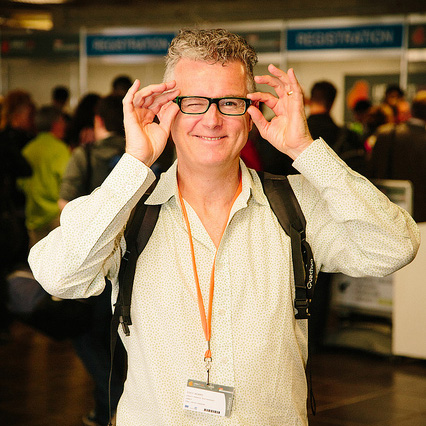Google Maps: Is Toronto showing the way to future city governance?
Edited on
24 June 2019Do you ever feel that Facebook, Google and Twitter are taking over your life? Well, that may be happening for real to some Toronto citizens. In a recent deal, the city authority teamed up with Sidewalk Labs, to regenerate Quayside, part of its disused waterfront. Sidewalk Labs is a subsidiary of Alphabet, Google’s parent company. The proposed development will eventually create 306,580 square metres of residential and commercial space that will house, amongst others, Google Canada’s new HQ.
How many likes have we got so far? Many city managers may be reading this with envy – grudgingly congratulating Toronto for pulling this off. After all, it’s widely acknowledged that cities need to harness the talent – not to mention the money – of tech giants to address the wicked urban issues we face today. Congestion; air pollution; affordable housing; employment: digital tech is now accepted as being an essential part of the solution. Across the world, cities are trying to work out just how.
That’s not to say that city authorities are short of ideas. Mariana Mazzucato is right to champion the innovation power of the public sector, pointing out the key role that government has made where long-term high-risk investment is required. The challenges our cities face need that long-term vision, but they also need sophisticated partnership solutions. They also need funds. Getting the right balance of that interplay is crucial.
But what’s happening in Toronto may be taking partnership to another level. Waterfront Toronto is the public development agency owned by the city, province and federal government. It is responsible for North America’s largest waterfront regeneration project – 800 hectares of underutilized land along Lake Ontario. This is the body that has contracted Sidewalk Labs to design and deliver its ambitious smart city plans.
And they do not lack ambition. During the launch event, Sidewalk Labs CEO, Larry Doctoroff, set out a vision of urban bike paths, autonomous vehicles and smart mass transit. Packaged together, he predicted that this could save the average Canadian family $6,000 a year. The company’s 220-page portfolio includes plans for taxibots (self-drive vehicles controlled by apps), weather mitigation through innovative planning and construction and flexible pedestrian friendly streets featuring pop-up facilities. All very Blade Runner. This is a real-life urban lab.
Welcome to the lab

Of course, urban innovation labs are nothing new. Globally, cities are now used to providing a platform for players to prototype, test and implement. But the scale and nature of the Sidewalk deal has unsettled some. It is one thing to identify platforms to inform and drive innovative small-scale solutions with citizens. It’s quite another to have the run of an entire neighbourhood as a testbed for civic experimentation.
Waterfront Toronto stress that this is a partnership either side can walk away from. Sidewalk Labs are also emphatic about the need to work alongside the community. Their promotional material stresses the need for collaborative solutions. It also refers to the risk of widening inequalities. However, the company’s previous forays include New York’s Highline and Hudson’s Yard developments – both are which are commonly cited as drivers of gentrification.
Coupled with this is the growing body of evidence showing that the presence of tech-related innovation clusters actually drives inequality in cities. A recent study has identified direct links between the growth of tech innovation in cities and widening economic inequalities. This found that between 1990 and 2010 the extent of product patenting doubled. Over that same period inequality in the city jumped by 5.2 Gini points. Google moving into the neighbourhood brings benefits – but also challenges.
Can smart cities be inclusive cities?
So what are our cities to do? Limited public resources combined with the complexity of our challenges mean that public private partnerships are here to stay. Digital technology, likewise, is only likely to assume greater importance in addressing urban challenges in future. Can cities square the circle, embracing tech-based solutions and attracting digital business clusters without accelerating levels of urban inequality?
 Two important factors emerged from the aforementioned study in relation to this. The first is ensuring that there is effective public transport infrastructure. Easy access to inner-city premises reduces the need for employees to live nearby. Convenient and affordable commuting options can limit the big wave of incoming residents which typically kick-starts the gentrification process. Another component of this is growing demand for high quality and specialised services. The second factor, access to quality schools, is linked to this. In the United States where school funding is so localized, this is a particularly divisive issue.
Two important factors emerged from the aforementioned study in relation to this. The first is ensuring that there is effective public transport infrastructure. Easy access to inner-city premises reduces the need for employees to live nearby. Convenient and affordable commuting options can limit the big wave of incoming residents which typically kick-starts the gentrification process. Another component of this is growing demand for high quality and specialised services. The second factor, access to quality schools, is linked to this. In the United States where school funding is so localized, this is a particularly divisive issue.
From a European – and indeed a Canadian - perspective, these challenges might appear more manageable than in the US. But we should avoid complacency. Although Jan Gehl's vision of the compact walkable city remains the gold standard, many of our cities suffer from urban sprawl, congestion and deteriorating public transport due to financial constraints. Our city schools may be more egalitarian and higher quality than those in the US, but in many places they are no longer the social escalators they once were. There are also well-articulated concerns about growing segregation in the school system, reflected in a recent Council of Europe report.
The URBACT dimension
URBACT has a strong interest in the future of city governance. It also has a commitment promoting cities that are smart, but also sustainable and inclusive. Across the programme, we see city networks exploring different dimensions of these governance challenges.
The partners within Interactive Cities, led by Genova, have been focused on the impact of digital developments on city governance. This has included examining the way in which cities are utilising digital tools to improve public services and to encourage civic participation. Lisbon’s use of digital tools to support the city’s CLLD partnership is a good example. Another is the city of Ghent’s embedding of digital approaches throughout all of its services. It’s also not surprising to see an Estonian city in the vanguard, given the country’s modernising culture. Tartu is experimenting with ways to utilise digital tools to widen involvement in its masterplanning. Interactive Cities has also been examining Amsterdam’s digital strategy, which will be the subject of a forthcoming article.
An important perspective on this is to challenge the notion that this is simply about the digitization of public services. Paul Natorp, who organised the recent Rethink Activism Festival in Aarhus, Denmark, explained this to members of the CHANGE! Network. Within the context of CHANGE’s concept of people-powered services, Paul underlined that we miss an important point if we think this is simply about consumption.
The citizen as consumer is only one component of our relationship with the state. It is an important one, which is changing as we expect 24/7 availability and good customer care. It also has potential for change, as digital tools create the potential for citizens as prosumers, actively involved in the co-design of services they use.
But behind that is the more fundamental question of what it means to be a citizen today. What are the rights and responsibilities that come with that in the digital city age? The Aarhus Festival posed that key question. It reverberates around the developments planned for the Toronto Waterfront. As our cities continuously evolve and reinvent themselves, how do we ensure that all citizens have an equal voice and share in its future? As that great adopted Canadian urbanist, Jane Jacobs put it: “Cities have the capability of providing something for everybody, only because, and only when, they are created by everybody.”
Riding the tiger
Ultimately then, this is not a debate about tech and smart solutions. It is about how we govern ourselves in the digital age. It is no coincidence that it is within cities – where our global concerns are most pressing – that this debate is playing out. Whether we badge it as inclusive growth or smart sustainable cities, the challenge is finding ways to mobilise technological solutions without abandoning the values that define the cities we need – open, inclusive and accountable.
Harnessing the firepower of corporate digital giants is deeply attractive for city leaders. They are, undoubtedly, key stakeholders in delivering our cities of the future. But we are right to remain wary of them. Writing this on the 22nd November, anniversary of John F. Kennedy’s death, his words of advice are still important to bear in mind: “Those who foolishly sought power by riding the back of the tiger ended up inside”
 Submitted by Eddy Adams on
Submitted by Eddy Adams on




